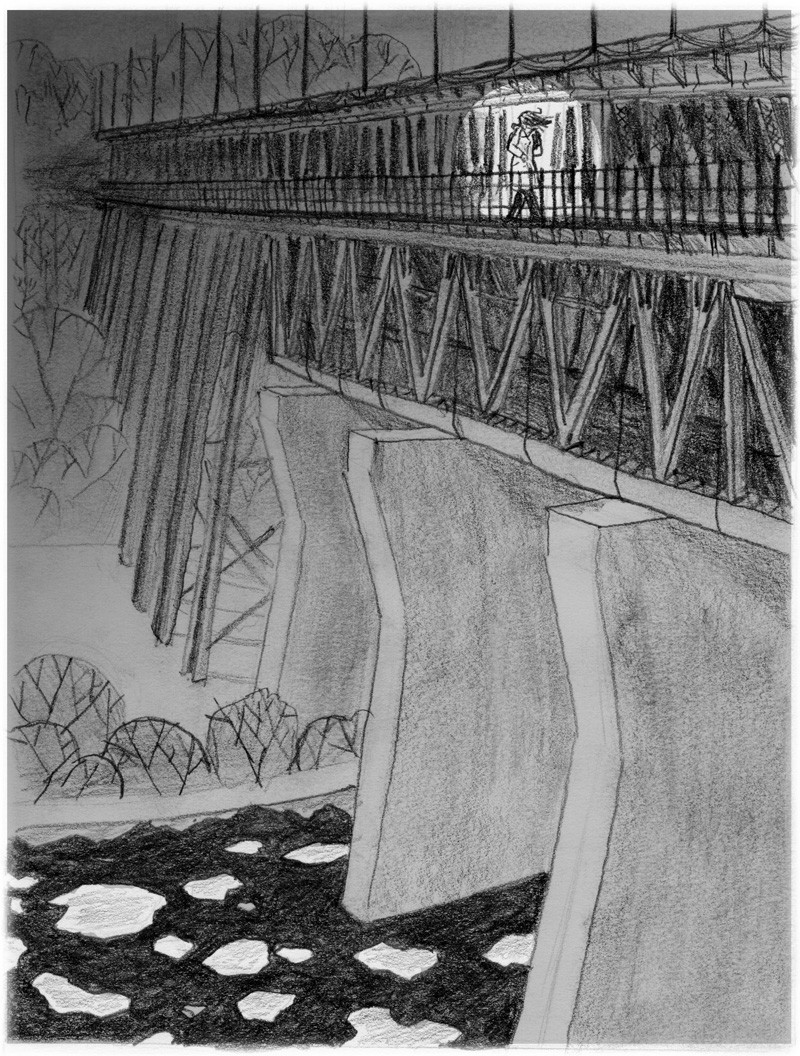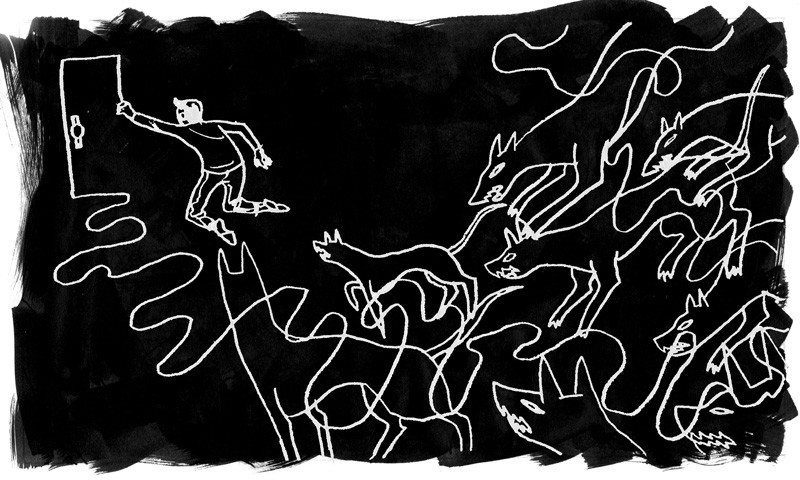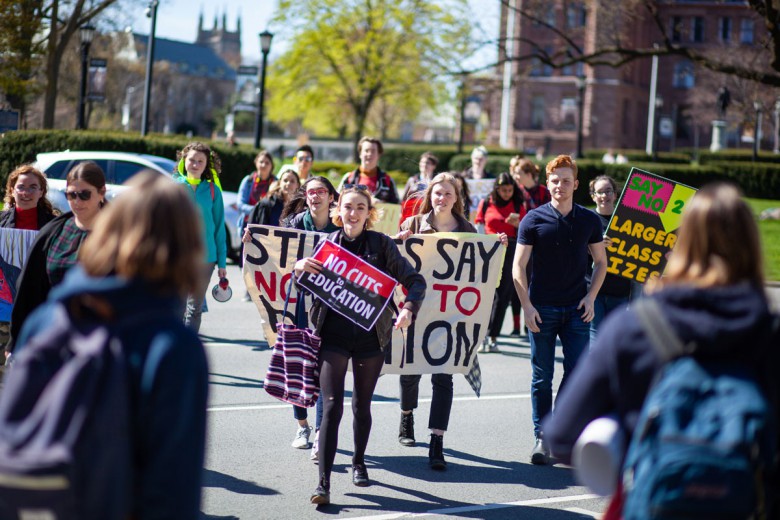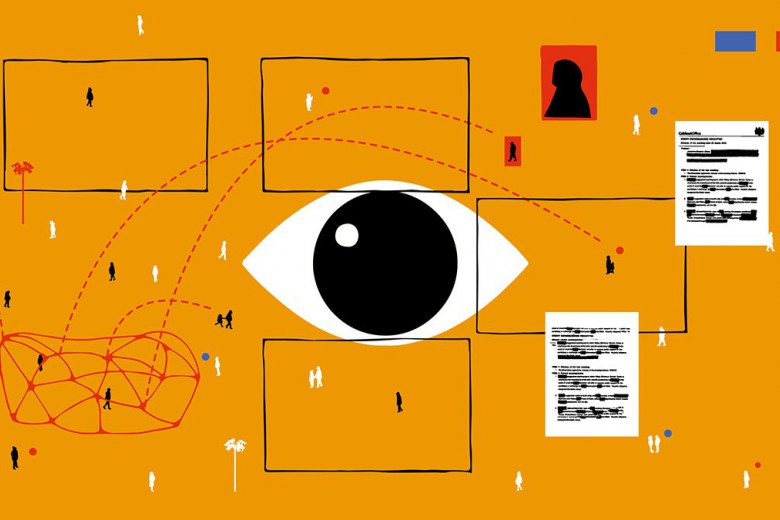
“I was walking with my brother and he wondered what’s on my mind. I said ‘what I believe in my soul ain’t what I see with my eyes, and we can’t turn our backs this time.’” — Jackson Browne
I reached Edmonton’s High Level Bridge as clusters of snowflakes clouded the sky. It was Friday night, already dark, and I was alone but for a young man in black who passed me from the opposite ledge. Walking home was my favourite time to practise singing, and my teacher had me rehearsing Joni Mitchell’s “River.” I squinted into the whitewashed western horizon and sang to the North Saskatchewan: “I wish I had a river so long, I would teach my feet to fly …”
Months later, I learned that my brother, Eugene, had walked the same ledge only a couple of hours earlier. He didn’t make it to the other side of the bridge. On Saturday morning, January 8, 2011, as the deep freeze continued, my mom called to tell me Eugene was missing from Alberta Hospital.
My brother spent six years in and out of institutions, mostly hospitals, where doctors diagnosed him with drug-induced paranoid schizophrenia. He’d gone absent without leave several times, so at first we hoped he’d just come home, but as winter weeks passed with no news, we braced ourselves for the worst. On February 3, I spoke with the missing persons constable who told me about a police report he’d been mulling over since the Monday after Eugene went missing. A man driving over the bridge at 4 p.m. that Friday had notified police when he’d caught a glimpse of a male, “at least six feet tall in a blue and white coat,” diving from the railing. Hearing this news, I closed my eyes, and there he was, jumping. My heart sank in my chest, and I knew he was gone.
“Some people who go in the river never come out,” the constable warned us regarding the search for the body, but my mom prayed for closure and to see her son again. Finally, on April 10, police were at her door, and she called me, crying: “They found Eugene.” But she couldn’t see him that way – a body emptied of life yet full of water, pulled from the river on a Sunday afternoon, cash still in his wallet and a cast on his arm.
We’d grown up together as fairly normal teenagers who’d rebelled against impending adulthood by smoking a lot of pot, taking mushrooms, and getting drunk. My friends and I loathed the thought of having to live in “the real world” of mortgages, university, debt, responsibilities, and general wage slavery. In the summer of 2004, when Eugene was 19 and I was 17, he told me he was hearing voices. I suggested he seek professional help; then I stopped abusing drugs. An older sibling can be like a yellow canary – first to go down the mine.
I remember our mom asking, “Why him?” But who could ever answer? There’s no single or simple explanation. However, based on my experience, there are several potential triggers of mental illness and suicide in youth, as well as options for prevention.
*
I’m visiting friends, Ben and Joan, at their rural home in April 2012. Their 11-year-old son, Noel, pesters Ben to bring him along to the city, but the answer is no. Noel then threatens he’ll “go commit suicide.” It’s his second threat this week. After breakfast, Ben describes the way his son roughhouses with him. “He just goes all psycho and wants to rip me apart!”
Earlier that week, Joan had responded to Noel’s criticism of a boy crying at school by saying that it’s okay to be emotional, to which Noel replied, “Emotional people are crazy.” I tell myself Noel isn’t sincere in his threats, yet it’s disheartening because the attitude is too familiar.
Family upbringing plays a part in shaping the subtle beliefs that determine how and what we think, say, and do, but a myriad of influences outside the home also shape young adult development. The media models few virtues and intentionally targets youth as leading consumers. Youth are naturally impressionable, so it becomes a tightrope walk between succumbing to powerful suggestions and staying true to oneself, which is constantly evolving. Advertisements online, on TV, in the street, at school, and at social events showcase instant gratification products as solutions to everything, including problems with complicated psychological roots.
In cases of personality disorders such as Eugene’s where there’s no sign of brain disease or developmental disability, “post-traumatic stress can also be a factor,” suggests John Freebury, who worked with youth at the Progressive Alternatives Society, an aid organization in Calgary for people living with mental illnesses. An overload of psychological trauma can numb a person to pain in themselves and others, leading them to abandon empathy and dissociate. By 19, my brother rarely expressed his feelings in general, let alone about traumatic incidents such as being hurt by someone or degraded by the system’s treatment of him. In a cultural climate in which both youth and adults are often desensitized from pain, the encouragement and support needed to confront pain constructively can seem non-existent.

We numb ourselves to psychological traumas, including emotional isolation, but in disconnecting from others, we’re also disconnecting from ourselves. Dissociative personality disorders and psychosis where the unconscious internal voice wants something different than the conscious mind are symptomatic of societies where this self-against-self divide is strongest. As professor Will Hooker from North Carolina State University states, “Ethics in the past cared more for the community. Our ethics today care more for the individual.” Societal solutions to ending this addictive pattern of separateness and improving the mental environment could include simple acts that promote empathy and compassion (traits that would be valued and encouraged by a healthy society), such as helping ourselves through helping others, or observing how similar a stranger’s needs are to our own.
*
As I write, a young man nearby strums a guitar and sings, “Mom, I don’t smoke that much dope, don’t you worry about me. I only get high about twice a day …” Youth and adults often write off marijuana as no big deal, and although not everyone experiences negative effects from the drug, it can be damaging for some. An article from 420 Magazine, “Understanding Your High – The Effects of Marijuana on Consciousness,” states that negative experiences from marijuana come when the drug “brings to light emotions or pressures which threaten the person’s self concept or sense of control,” and that coping with these emotions through suppression is “not too effective.” In other words, young adulthood can be an unfortunate time to smoke marijuana, especially for males for whom it may be hard to forget pressures to be self-assured, in control, and emotionless. Constructive questioning of one’s self-concept can lead to growth, but marijuana can amplify such uncertainty to a dysfunctional point. With prolonged use, it can also push symptoms of our societal schism to hallucinatory extremes.
Societal pressures are different for each gender yet equally damaging. We teach boys to be rich, aggressive, in control, all-knowing, shocking, and even “crazy,” in the sense of doing the riskiest pranks or crimes (but never showing “crazy” emotions, of course). Those who manage to escape this conditioning or simply don’t fit in are often ostracized for their very normal differences. I watched my brother attempt to grow up while fighting this inner battle against himself – between external demands and internal needs – to the point that he was incredibly hard to reach and was automatically critical of differences in himself and others. I don’t remember ever seeing Eugene cry after the age of 12. To me, he was fearless. When he started to undertake more dangerous pursuits with drugs, violence, and the law, I came to wonder if his fearlessness was only a repressive mask made up of these distorting influences that he wore until it smothered the real person inside. This apparent fearlessness, so essential to his young male persona, backfired into an amplified paranoia that pushed him further into a spiral of drugs and ended in a final act of twisted bravery against the very human fear of death.
*
Eugene left no suicide note, only a list on his desk entitled “Pros and Cons: Anti-Dopamine Medication.” The pros simply read, “Good restfull sleep,” while the cons listed several side effects including “Lack of sex drive,” “Inability to wake up at a certain time in the morning without feeling overly fatigued,” “Inability to articulate when speaking,” and “Extreme lack of inter-social clarity.” The list was a reproduction of a document on his computer last modified at 5:04 a.m. on January 7, the day he took his own life. Earlier, at 4:31 a.m., he’d started writing another document called “Addressing My Doctors at AHE [Alberta Hospital Edmonton] Regarding Medications I am On And Have Been On.” He introduces himself and states his diagnosis of “skitsophrenia,” and then writes: “In early 2005 they put me on an anti-dopamine drug called Risperdal, which looking back in perspective, and speaking bluntly has ruined 4 total years of my life.” Suffering from difficulties in articulating his feelings, and being heavily medicated, I’m not sure he was ever able to deliver such an address in person or express the extent of his dissatisfaction to those who determined his treatment. His medications, in increasing dosages over the years, continued their mere attempts to patch rather than mend his torn mind and heart and to silence his inner rage at the divide between what was required of him and what he truly wanted, a conflict that began in his youth and that no drug alone could ever heal.
*
You don’t just tell someone with a broken arm to ‘go fix it’ without a cast,” explains a friend while describing how she overcame depression and suicide attempts. “If medical help for mental illness is available that works, use it, but as a tool, not a crutch,” she suggests. “It was like drowning. The medication became a life preserver that pushed me above the waters long enough to find my own way back to shore.”
There should be no shame in using prescription medication if a person feels they need that help. Nonetheless, our medical system urgently needs a restructuring away from the profit-driven, over-prescription of synthetic chemicals as permanent solutions to mental illnesses. Before signing prescriptions, doctors need to help patients develop treatment plans that at least consider a future without dependence on pharmaceuticals. With high demands for alternative medicine and results that prove its effectiveness, why not support and fund the integration of more self-connective or holistic therapies?
My brother suffered from a disease that altered his behaviour, and well-meaning doctors gave him behaviour-altering drugs (more than one of which had suicidal side effects), but he was an intelligent person who wrote funny stories, played guitar well, and knew more about the nature of his condition than anyone gave him credit for. Unfortunately, his attempts to get help led to an increasingly medicated, undignified, and torturous existence.
*
There are many ways to build a house, and many materials to choose from. In dreams, the home is said to represent “the self” – the self my brother hid within, searched for, and finally left behind. When we were young and building our selves, Eugene and I became frustrated and rebelled. We just weren’t up for the challenge of life as we saw it lived: get a job, get a house, get married, get kids, get in debt, get in the rat race. So we polluted our foundations with cynicism and drugs that undermined our potential. We eroded our individuality, unconsciously, with media-enforced definitions of self that chip away, bit by bit, at the foundation within until there’s nothing left to stand on. We cut the connections between body, mind, and soul until our selves couldn’t hold together, and that’s how homes crumble. To prevent this kind of existential earthquake, we need to take collective responsibility for helping youth develop into strong adults. We can help youth build strong foundations that protect them from our current cultural myths by refusing to accept or support the myths ourselves. Children need consistent messages to grow by, not just from parents but also from a society that values youth health and education as a high priority. To help prevent youth cynicism, drug abuse, mental illness, and suicide, we can start by remembering that extremely gifted and intelligent people struggle with illness or addiction, and asking with open hearts and minds, “What might they see or hear that others do not?”
My brother and I continued to relate through music as he faded into an unrecognizable young adult. I still remember the awe in his voice when he first heard Bob Dylan’s “Visions of Johanna.” I didn’t know if he was still awake at 3 a.m., but finally, near the end of the song, he whispered from the opposite loft, “Is this Dylan?” He was trying to sound like he didn’t really care, but it didn’t fool me. I knew he’d love the song, and I played it because he was there. Something in life kept him quiet, but who knows? Maybe he sang to his death.


_780_520_90_s_c1.jpg)



